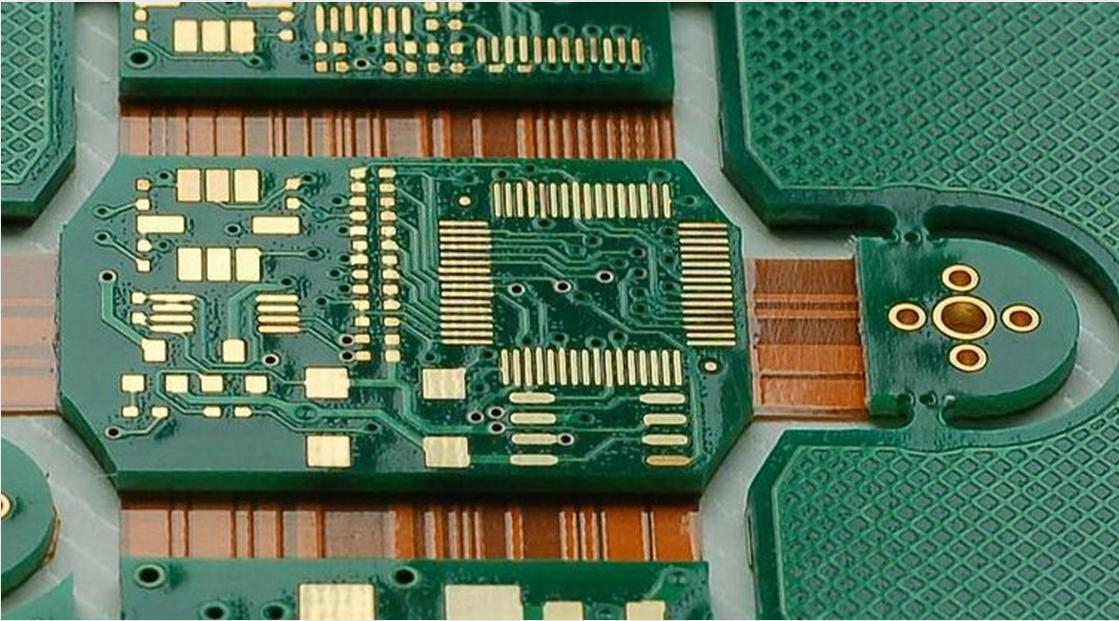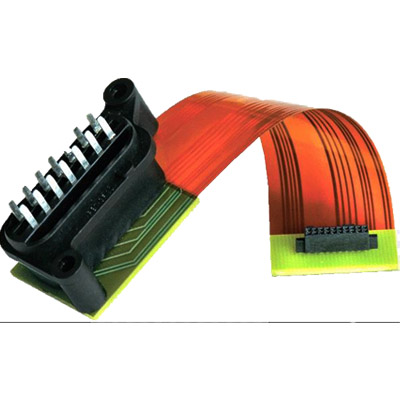6-layer rigid-flex PCB assembly
Name: 6-layer rigid-flex PCB assembly
Structure: 2L flexible + 4L rigid
Hole size: 8mil
Surface Treatment: Immersion Gold
Material: FR-4+PI
Number of layers (R+F): 2R+2F+2R layers
Thickness: 0.24mm+1.2mm
Minimum hole: 0.15 mm
Minimum Line/Space: 4/4mil
Impedance: No
Surface Treatment: Gold Plated
What is a rigid-flex board?
The birth and development of FPC (soft board) and PCB (rigid board) gave birth to a new product of soft and hard board. Therefore, the soft and hard combination board is the flexible circuit board and the rigid circuit board, which are combined according to the relevant process requirements through pressing and other processes to form a circuit board with FPC characteristics and PCB characteristics.
The birth and development of FPC and PCB gave birth to the new product of soft and hard board. Therefore, the soft-rigid combination board is a circuit board with FPC characteristics and PCB characteristics formed by combining flexible circuit boards and rigid circuit boards in PCB proofing according to relevant process requirements through pressing and other processes.
In PCB proofing, the rigid-flex board provides the best solution for limited space conditions. This technology offers the possibility to safely connect device components while ensuring polarity and contact stability, and reduces the number of plug and connector components.
Other advantages of rigid-flex boards are dynamic and mechanical stability, the resulting 3-dimensional design freedom, simplified installation, space savings, and maintenance of uniform electrical characteristics.
Rigid-flex boards Rigid-flex boards are expensive, but they are extremely versatile and can be tailored for applications in many industries. There are several situations that make a rigid-flex board the best solution. These include:
1. High shock and high vibration environment. Rigid-flex boards are highly impact-resistant and can survive high-stress environments that would otherwise cause equipment failure.
2. High-precision applications where reliability is more important than cost considerations. If a cable or connector failure would be dangerous, you're better off using a more durable rigid-flex board.
3. High-density applications: Some components lack the surface area required for all necessary connectors and cables. Rigid-flex boards can save space to solve this problem.
4. Applications that require multiple rigid boards. When more than four connection boards are crowded in an assembly, it may be optimal and more cost-effective to replace them with a single rigid-flex board.
Application field
Rigid-soft boards are widely used, such as: iPhone and other high-end smartphones; high-end Bluetooth headsets (required for signal transmission distance); smart wearable devices; robots; It can be seen. With the development of smart devices towards high integration, light weight and miniaturization, and the new requirements of industrial 4.0 for personalized production. With its excellent physical properties, the rigid-flex board will surely shine in the near future.
Advantages and disadvantages of the combination of software and hardware
Advantages: It has excellent characteristics of both PCB and FPC. It can be folded and bent in half to reduce space, and it can also weld complex components. At the same time, it has a longer life than the cable, more reliable stability, and is not easy to break and oxidize and fall off. It is very helpful to improve product performance.
Disadvantages: There are many production processes of soft and hard boards, the production is difficult, the yield rate is low, and more materials and manpower are invested. Therefore, its price is relatively expensive and the production cycle is relatively long.
The advantages of our company's production of soft and hard boards:
Possess high-end production equipment and complete quality system;
With more than 10 years of rich technical accumulation in the field of circuit boards;
Possess the best process experts in the field of soft and rigid boards;
It has the ability to supply high-end multi-layer rigid-flex boards in large quantities.
Board type one: soft and hard composite board
The soft board (FPC) and the hard board (PCB) are pasted together, and there is no plated hole connection at the pasting place, and the number of layers is more than one.
Plate type 2: soft and hard multi-layer combination board
There are plated through holes with more than two conductor layers.
Rigid-flex board production process
1. Simple rigid-flex board production process
Cutting→mechanical drilling→plating through holes→filming→exposing→developing→etching→peeling→false pasting→hot pressing→surface treatment→processing combination→testing→punching→inspection→packaging
2. Multi-layer soft and hard board production process
Cutting → pre-baking → transfer of inner layer pattern → inner layer pattern etching → AOI inspection → lamination of inner layer circuit covering layer → punching positioning hole → multi-layer lamination → drilling via hole → plasma desmear → metallized hole → Graphic plating→outer layer graphics transfer→etching outer layer graphics→AOI inspection→lamination of outer layer covering layer or coating protective layer→surface coating→electrical performance testing→shape processing→testing→packaging
We provide 6-layer rigid-flex PCB assembly, rigid-flex PCB assembly services. Kingford is your one-stop rigid-flex circuit board assembly company.
A 6-layer PCB consists of a PCB core that has two PCB layers with two layers on each side. It belongs to multilayer PCB.
The PCB core consists of a substrate material layer and two copper layers. It is cut from double-sided copper clad laminate. Between the copper layer and the PCB core is the prepreg. Prepreg and PCB substrate are the same material except that the prepreg is semi-cured and the substrate is cured. The outer PCB layer consists of prepreg riveted with copper foil.
The 6 layers include signal, ground (GND), and power planes. The top layer (layer-1) and the bottom layer (layer-6) must be signal layers. The 4 internal PCB layers include 2 signal, 1 ground, 1 power, or 1 signal, 2 ground, 1 power. So there are 4 6-layer PCB stack-ups.

Name: 6-layer rigid-flex PCB assembly
Structure: 2L flexible + 4L rigid
Hole size: 8mil
Surface Treatment: Immersion Gold
Material: FR-4+PI
Number of layers (R+F): 2R+2F+2R layers
Thickness: 0.24mm+1.2mm
Minimum hole: 0.15 mm
Minimum Line/Space: 4/4mil
Impedance: No
Surface Treatment: Gold Plated





